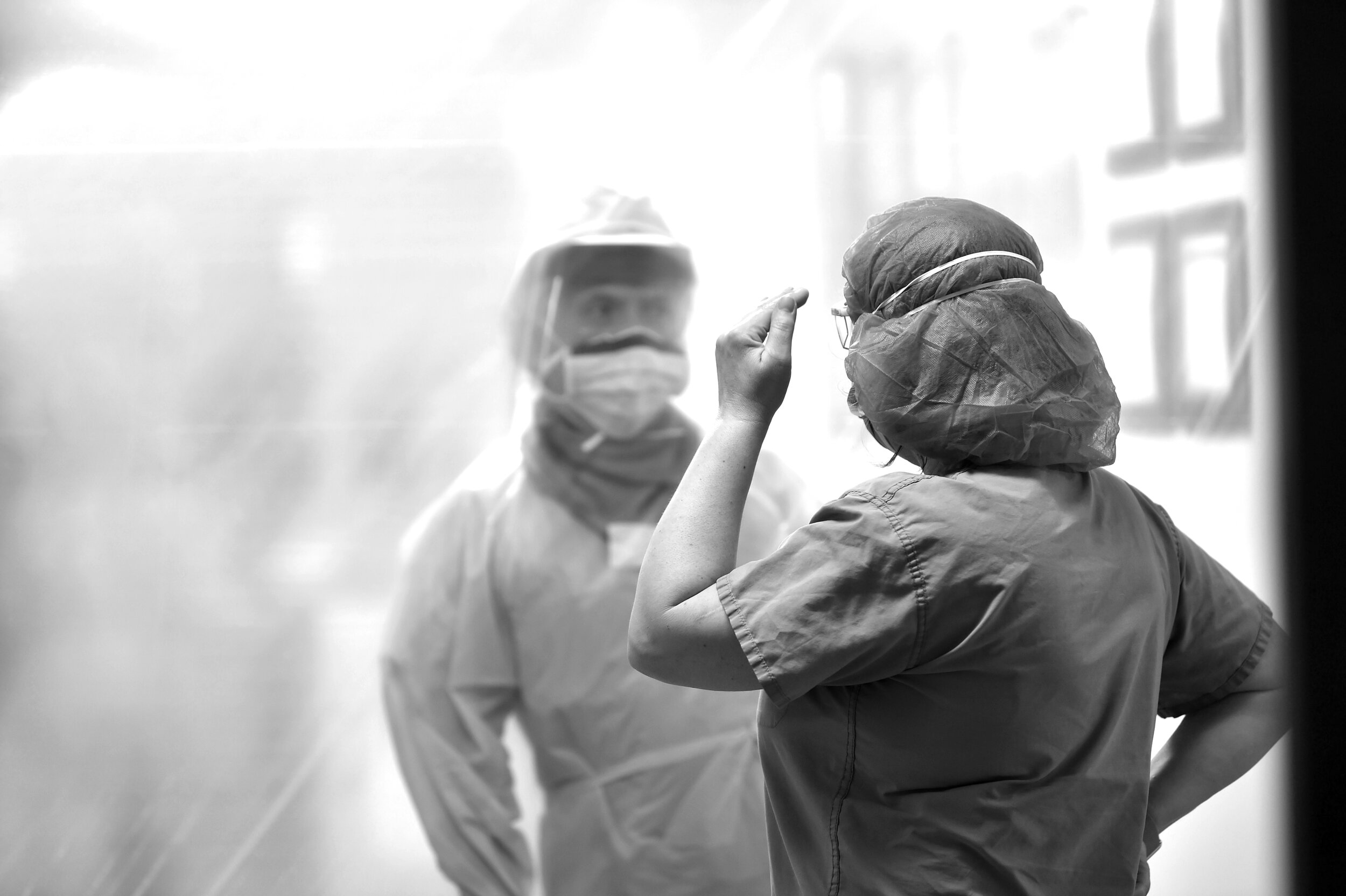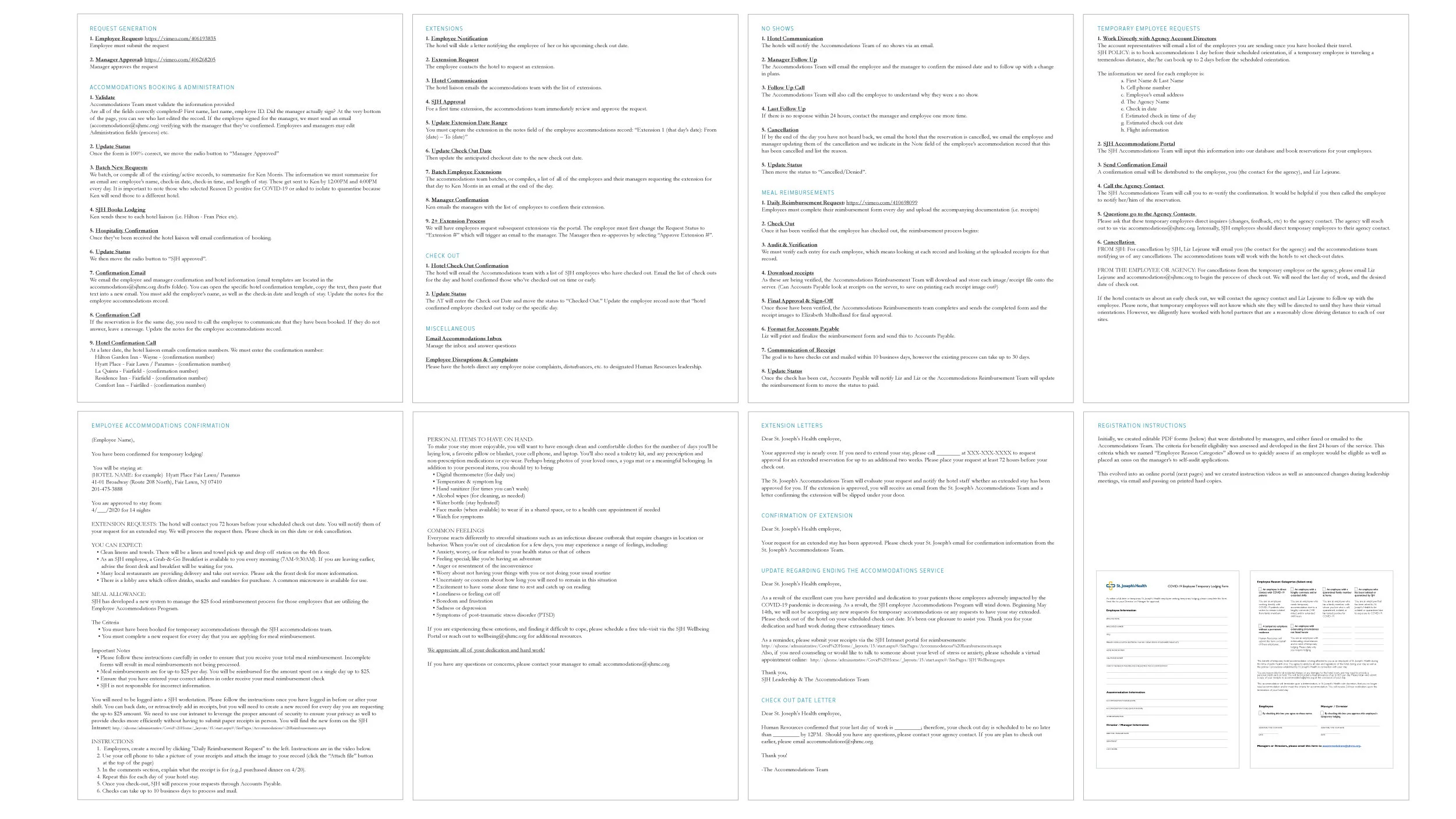
Emergency Housing
Emergency Service Design
April 2020 - May 2020
Team:
Ken Morris | VP of External Affairs
David Kim | Director of Innovation
Sunita Patel | Director of Compliance
Topics:
Mental Health, Wellbeing, Housing, COVID-19, Service Design, Communications Design, Development
Our Process:
Defined: how might we support our frontlines during a crisis?
Learned: we must design flexible infrastructures to meet evolving, emergent needs
Made: processes, services, and teams
Summary
The morning of April 2nd, 2020, with more than 1 million COVID-19 cases worldwide and over 53,000 deaths, SJH Leadership asked a group of employees, including The Center for Innovation at SJH, to urgently build a new service that would provide accommodations for any and all employees in need.
Within days, we launched a service that would go on to house 560 employees. After 3 months, 68% reported a decrease in anxiety levels, and 78% reported improved stress levels.
Distributed instructions for sign-up
LAUNCH BY THE NUMBERS
In 24 hours we had a mission, team, and infrastructure
In 48 hours launched a service
In 72 hours provided accommodations to 50 employees
In 96 hours prototyped a scalable service and digital tool
In 1 week provided services to 170 employees
We continued to expand, scale, and evolve the many additional processes necessary to meet the ever-growing demand. We eventually built a small team to manage the 560 reservations and maintained a 99% satisfaction rate of the overall experience and 100% satisfaction of the application process.
The Service
The team quickly developed processes and a service blueprint which included: request generation, booking + administration, extensions, check out, additional administration, disruptions or complaints, no shows, meal reimbursements, and temporary employee requests.
High-level service blueprint
ITERATION & PROTOTYPING
One challenge that arose was confirming accommodations for temporary employees because there were different numbers of moving parts with different process owners. Following a quick, iterative prototyping style, we adapted and adjusted the prototype before landing on the final version.
Version 1.0
In the first several days, the team discussed using paper forms but quickly decided on editable PDF forms that would be filled out by employees and managers. These were manually inputted into an Excel file that was passed between team members taking morning and night shifts.
Version 2.0
Over the following 7 days, the prior system required many hours and hundreds for manual processes. We developed an internal site for intake form that would also maintain the electronic database of employees and managers as well as track updates. This was referred to as The Accommodations Portal.
Version 3.0
The team explored alternative online options that can be accessed outside of the SJH VPN.
Process workflows and templates for communication
THE SECOND WAVE
Because of the robust planning and iterating in the original program, we were ready to quickly start the program up during the second wave of COVID patients. Within a day, the program was restarted and we utilized the same processes and tools in place. Beyond just opening the program, we also improved areas of the original program with the data and findings from the original launch.
People Management Strategy:
We identified a nearly full-time program manager and re-evaluated the process for the Finance Department along with the Accounts Payable ability to process reimbursement requests.
The Reimbursement Process:
We considered processing reimbursements contemporaneous to employees’ stay and on a routine time frame.
Re-using Our Infrastructure:
We re-launched our internal site. We also required the use of the same tools to automate and centralize processes, even if it requires an initial learning curve, to provide better long-term experiences.
Data visualization of our first 3 months
IMPACT
70% Improvement in Employee Anxiety Level
80% Improvement in Employee Stress Level
560 Reservations Processed
2641 Reimbursements Requested and Approved
99% Satisfaction Rate of Overall Experience
100% Satisfaction Rate of Application Process
The Feedback
“The (service) helped reduced my anxiety since I have small kids and a mom who's asthmatic.”
”Thank you so much! Thank you for allowing us to take care of our families <3”
”This has been a HUGE help. Thank you so much for doing this. It is really making a difference.”
”Everyone was awesome and this was a great idea. It definitely helped relieve the stress of coming home to my wife and infant daughter. Thank you to everyone who put this together.”
Conclusion
Like many others across the hospital, we functioned with limited resources initially, running 24 hours a day, 7 days a week. Because this was a new experience and the service was comprised of many moving parts (multiple departments with different processes and skill-sets) alignment wasn’t smooth due to varying levels of comfort of tools, technology, and process creation.
De-brief on the challenges and future opportunities
This was the first of many services that we needed to create, implement, and optimize in response to new, emerging needs.






